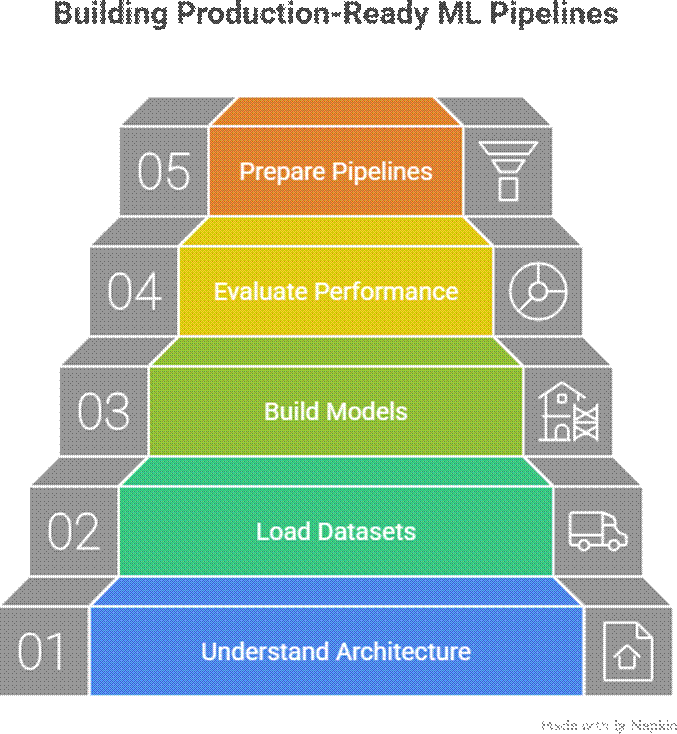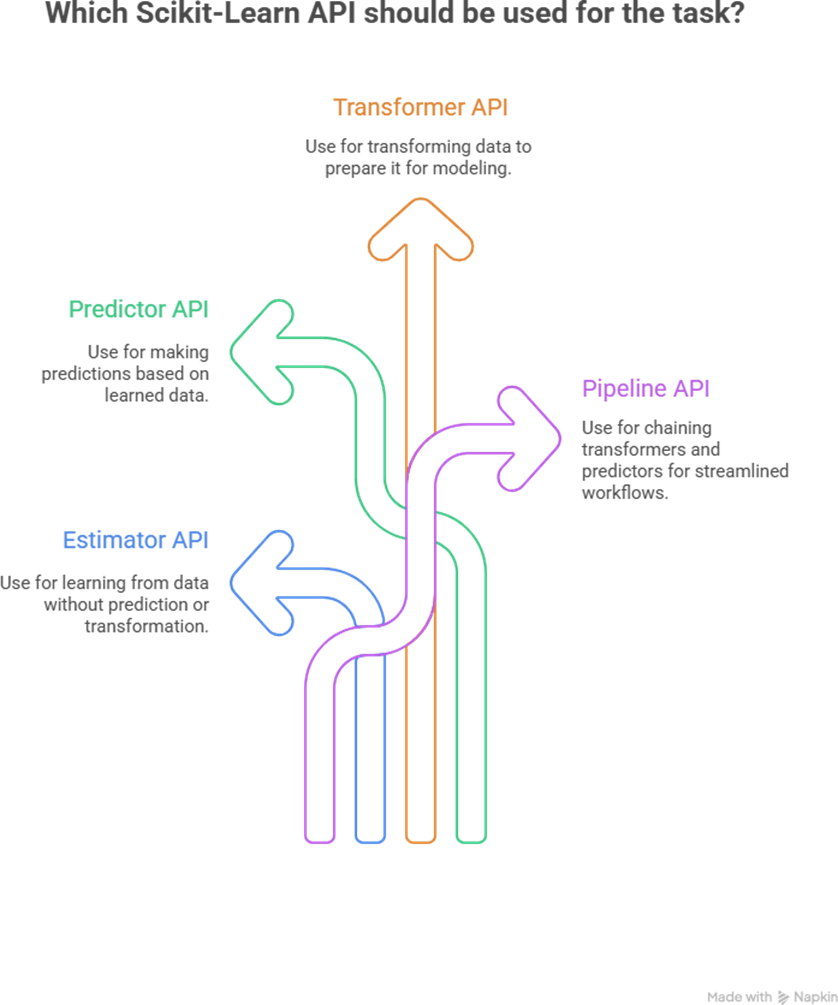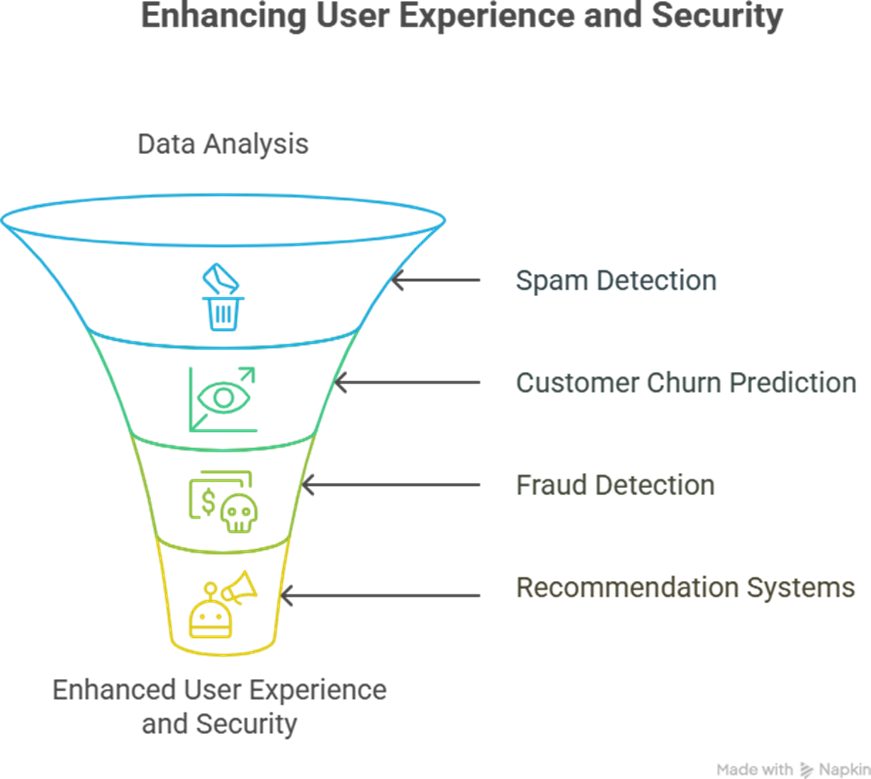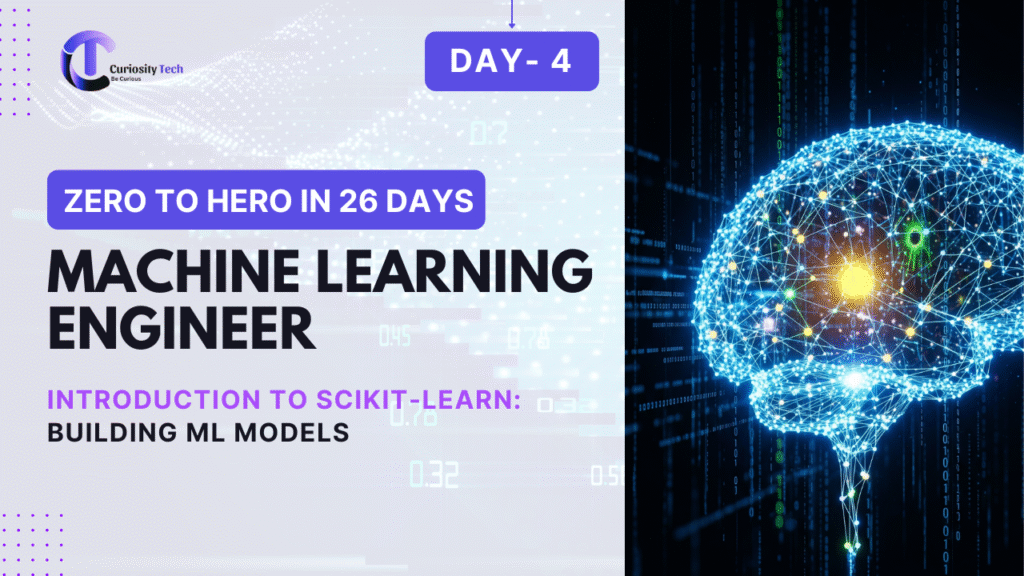Introduction
By 2025, Scikit-Learn has solidified its place as the gateway library for machine learning in Python. At CuriosityTech.in (Nagpur, Wardha Road, Gajanan Nagar), we guide learners to use Scikit-Learn as a hands-on laboratory for building, evaluating, and understanding ML models before they transition to deep learning or deployment.
Scikit-Learn is versatile, beginner-friendly, and widely adopted in industry. Whether you’re preparing for ML engineer interviews or real-world projects, understanding this library is mandatory.
This blog is structured like a Lab Manual, so you can follow it step by step, as if you were sitting in a real ML lab.
Lab Objective

- Python 3.9+
- Jupyter Notebook / VSCode
- Libraries: numpy, pandas, matplotlib, scikit-learn
Tip from CuriosityTech.in: Always work in virtual environments to avoid library conflicts.
Step 1: Understanding Scikit-Learn Architecture

For beginners, Scikit-Learn provides sample datasets. We’ll use the classic Iris dataset for classification.
from sklearn.datasets import load_iris data = load_iris()
X = data.data y = data.target
- X → features (sepal length, petal width, etc.)
- y → target (species)
At CuriosityTech.in, our students practice on both sample datasets and real-world datasets (like CSVs from Kaggle) to bridge theory and industry applications.
Step 3: Splitting Data
To evaluate model performance, we split the dataset into training and testing sets.
from sklearn.model_selection import train_test_split
X_train, X_test, y_train, y_test = train_test_split(X, y, test_size=0.2, random_state=42)
Lab Tip:
- Use 70-80% for training and 20-30% for testing.
- Always set random_state for reproducibility.
Step 4: Building a Classification Model
Let’s build a Logistic Regression model.
from sklearn.linear_model import LogisticRegression model = LogisticRegression()
model.fit(X_train, y_train)
y_pred = model.predict(X_test)
- .fit() → Learns from training data
- .predict() → Makes predictions on unseen data
At Curiosity Tech Park, beginners often practice multiple models to compare which performs best.
Step 5: Model Evaluation
Accuracy is just one metric. Scikit-Learn provides:
- Accuracy, Precision, Recall, F1-score
- Confusion matrix for classification
from sklearn.metrics import accuracy_score, classification_report print(“Accuracy:”, accuracy_score(y_test, y_pred)) print(classification_report(y_test, y_pred))
Lab Observation: Understanding metrics helps you choose the right model for the business problem, not just the one with the highest accuracy.
Step 6: Regression Example
Let’s also build a Linear Regression model on a synthetic dataset:
from sklearn.datasets import make_regression
X, y = make_regression(n_samples=100, n_features=1, noise=10, random_state=42)
from sklearn.model_selection import train_test_split
X_train, X_test, y_train, y_test = train_test_split(X, y, test_size=0.2, random_state=42)
from sklearn.linear_model import LinearRegression reg_model = LinearRegression() reg_model.fit(X_train, y_train)
y_pred = reg_model.predict(X_test)
Visualization:
import matplotlib.pyplot as plt
plt.scatter(X_test, y_test, color=’blue’, label=’Actual’) plt.plot(X_test, y_pred, color=’red’, label=’Predicted’) plt.legend()
plt.show()
This gives a clear visual of model performance. CuriosityTech students often practice such regression labs to understand how model predictions align with reality.
Step 7: Using Pipelines for Workflow Automation
Instead of manually applying transformations and fitting models: from sklearn.preprocessing import StandardScaler from sklearn.pipeline import Pipeline
pipeline = Pipeline([
(‘scaler’, StandardScaler()), (‘log_reg’, LogisticRegression())
])
pipeline.fit(X_train, y_train) y_pred = pipeline.predict(X_test)
- Scalers standardize data
- Pipeline chains steps → cleaner, production-ready code
At CuriosityTech.in, we emphasize pipelines because real-world ML isn’t just about modeling—it’s about reproducibility and scalability.
Step 8: Experimenting Like a Pro
Lab Exercise Suggestions:
- Compare Logistic Regression vs Random Forest for Iris dataset.
- Test different train-test splits and observe accuracy variance.
- Implement K-Fold Cross-Validation to evaluate model stability.
Pro Tip: Every exercise at CuriosityTech Nagpur is designed to simulate real industry challenges, preparing students for 2025 ML demands.
Infographic / Diagram (Description for Blog)
- Diagram showing ML Pipeline with Scikit-Learn:
- Raw Data → Preprocessing (Transformer) → Model Training (Estimator)
→ Prediction → Evaluation
- Side annotation: “CuriosityTech mentors help you navigate each step with real-world examples.”
Step 9: Real-World Applications

-
At CuriosityTech.in, students build these as mini-projects before progressing to deep learning or deployment workflows.
Step 10: Key Takeaways
- Scikit-Learn simplifies model building with fit, predict, and transform methods.
- Pipelines make workflows efficient, reproducible, and production-ready.
- Evaluation metrics guide real decisions, not just theoretical learning.
- Hands-on practice is non-negotiable for expertise in ML.
As we often tell students: “Master the lab first, and the field will be easy to conquer.”
Conclusion
Scikit-Learn is the first bridge between learning ML theory and building practical solutions. By mastering this library, you can:
- Build regression and classification models
- Evaluate models effectively
- Automate ML workflows for production
At CuriosityTech Nagpur, every learner gets personal guidance, real-world case studies, and a roadmap from Scikit-Learn basics to full ML pipelines. Connecting with us via contact@curiositytech.in or +91-9860555369 ensures your ML journey is guided, hands-on, and industry-aligned.

